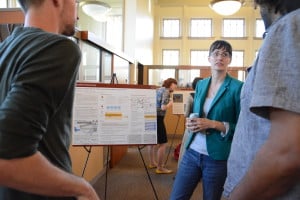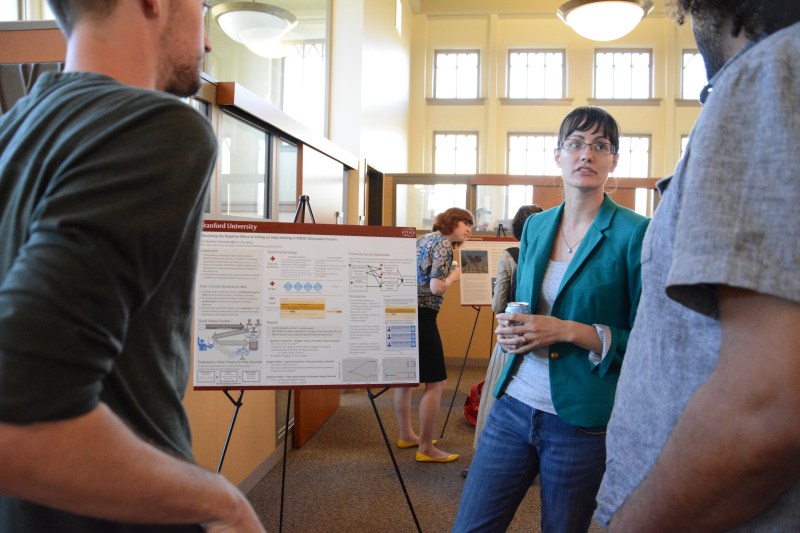
Last Friday afternoon, the Barnum Learning Hub was abuzz as researchers, educators and graduate students engaged in energetic discussion about the future of digital instruction and learning enhancement at the Lytics Lab Open House.
The open house, hosted by the Office of the Vice Provost for Teaching and Learning (VPTL) and the Graduate School of Education, and was part of “Year of Learning,” a year-long initiative to examine how learning has occurred at Stanford in the past, how it takes place now and what it will look like in the future.
The Year of Learning was introduced to the Stanford community during the Great Teaching Showcase two weeks ago.
In collaboration with all seven of Stanford’s graduate schools, the program will feature Stanford Pre-Education Society (SPREES) panels, learning workshops and faculty lectures, as well as expositions, labs and research centered around a different theme each quarter.
According to the program website, the theme this fall is “advancing the art and science of teaching and learning in higher education” and will focus on how to better educate students in the 21st century, especially in the midst of a fast-paced transition to more digitalized learning.
The idea to create the Lytics (short for Learning Analytics) Lab in 2012 came from five Stanford doctoral students – Emily Schneider from education, Rene Kizilcec ’17 from communication, Sherif Halawa from electrical engineering and Chris Piech ’16 and Chinmay Kulkarni from computer science – who wanted to analyze the large database of information collected from the Massive Open Online Courses (MOOCs) offered at Stanford.
In partnership with professor of education Roy Pea and professor of computer science John Mitchell, the five students gathered a small group of students and faculty from various academic areas to begin studying online learning.
In addition, Mitchell was appointed Vice Provost of Online Learning in 2012 and, in 2014, was named Vice Provost of Teaching and Learning, a newly established office for fostering innovation in teaching and learning strategies at Stanford.
Associate professor of education and director of digital research and planning Mitchell Stevens explained that the Lytics team is a vibrant group of people innovating through collaboration.
“Lytics is made up of different kinds of scientists who are thinking through a whole new kind of empirical information jointly and co-equally,” Stevens said.
At Friday’s open house, a broad variety of researchers in the fields of neuroscience, psychology, English, computer science and education presented projects to attendees.
One such project was a proposal by Petr Johanes, a second-year graduate student from the School of Education, to create a graphic novel that will facilitate learning the fundamentals of thermodynamics.
The project poster described the graphic novel as “science-based, narrative-driven and editable.”
Johanes explained that the novel will be used to compare what is known within different fields that study thermodynamics.
“Thermodynamics is foundational – whether you are majoring in Chemistry or in Material Science,” Johanes said. “The data gathered from tests to determine if this method works will aid in reforming how we teach.”
According to Candace Thille, director of the Open Learning Initiative, the need for more researchers from broad disciplines is integral not only to the Lytics Lab, but to the entire Stanford community.
“The strength of the [Lytics] Lab is the interdisciplinary perspective that people bring [and] the depth of expertise in their field… but to make a sense of this, we need the expertise of other fields,” Thille said. “What we do with Lytics is create a shared vocabulary.”
Contact Isabela Bumanlag at isabela7 ‘at’ stanford.edu.
This post has been corrected to reflect the fact the Office of the Vice Provost for Teaching and Learning (VPTL) is organizing the Year of Learning, not the Stanford Lytics Lab. The Daily regrets this error.
